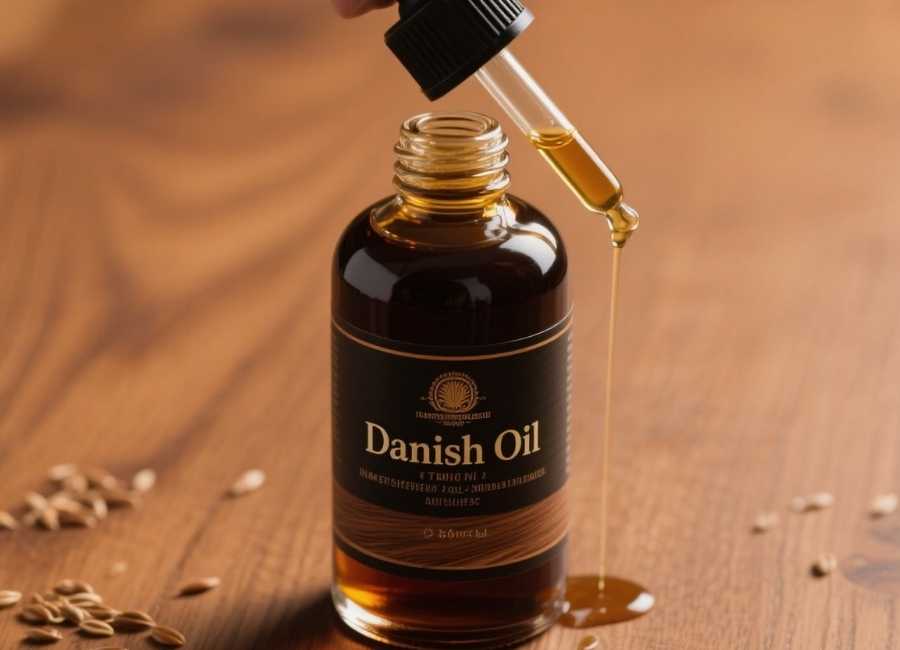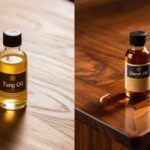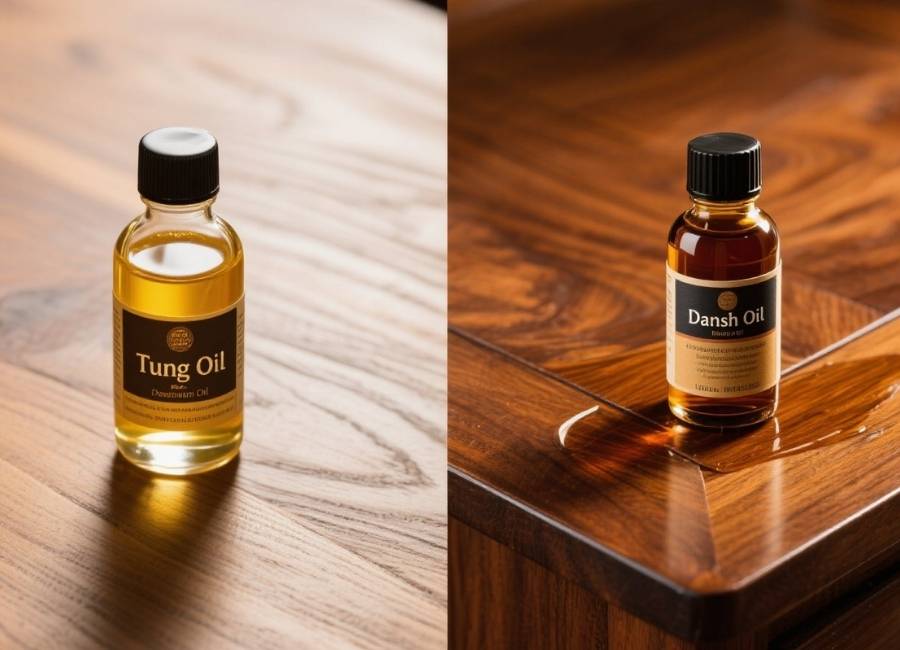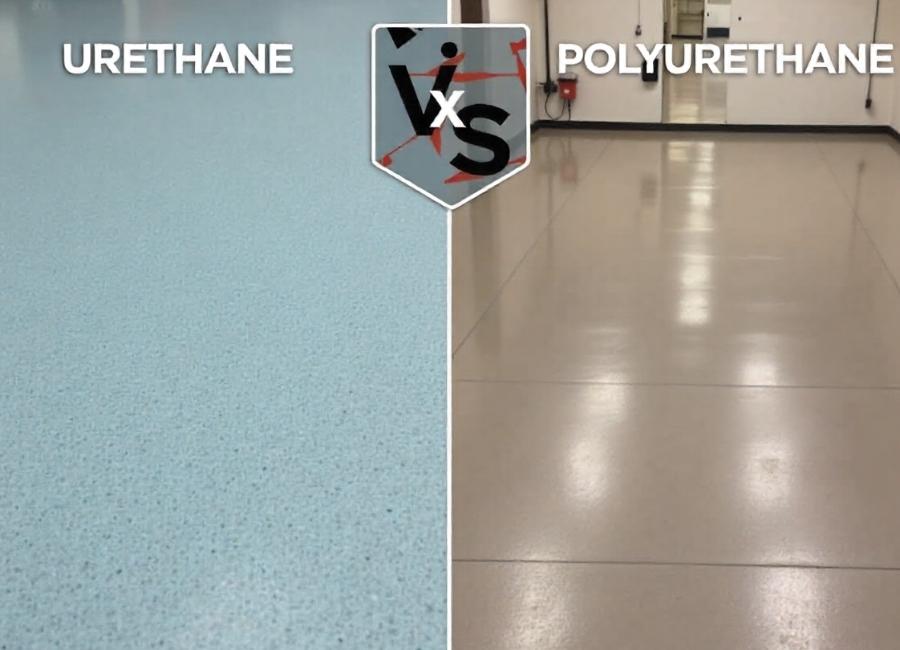Picking the right finish for your wood project matters as much as the woodworking itself. The finish protects the wood, brings out its natural beauty, and shapes the final look. Tung Oil and Danish Oil are two popular options. Both soak into the wood and nourish it, but each has unique qualities that may suit your project better.
If you’re unsure which wood finish to choose, this guide is here to help. We’ll compare Tung Oil and Danish oil side by side, looking at their features, finishes, and best uses. By the end, you’ll know which one fits your project and how to get great results.
What is Tung Oil?

Tung oil is a natural, plant-based oil made by pressing the nuts of the tung tree. (Tung oil, n.d.) People have used it for centuries to protect wood from water. (Tung oil, n.d.) When you apply pure Tung oil, it soaks deep into the wood and dries to a hard, flexible surface. (Tung Oil as a Woodworking Finish, n.d.) It gives a matte finish that highlights the wood’s color and texture without leaving a thick layer on top.
Since pure Tung oil is all-natural and food-safe after it dries, it’s a great option for things like cutting boards, butcher blocks, and wooden bowls. (REAL MILK PAINT Pure Tung Oil Wood Finishing Cutting Boards, n.d.)
What is Danish Oil?

Unlike Tung oil, “Danish oil” is not a specific type of Oil from a natural source. Instead, it is a proprietary blend of oils, varnishes, and thinning agents. The exact formulation can vary significantly from one brand to another. Still, it typically contains a mix of Tung oil and/or boiled linseed oil, combined with varnish for added durability and thinners for easier application. (Danish Oil, n.d.)
This blend is designed to offer the best of both worlds: the deep penetration and natural look of an oil finish with the enhanced protection and faster drying time of a varnish. Danish Oil typically dries to a harder-wearing, satin, or semi-gloss finish that is both attractive and highly protective. (Danish oil – Wikipedia, n.d.)
Key Differences: Tung Oil vs Danish Oil
Both oils work for many of the same projects, but their differences make each better for certain uses. Here’s a direct comparison of the key factors.
Finish and Appearance
The biggest difference between these oils is the type of finish they create.
- Tung Oil: Dries to a classic, elegant matte finish. It darkens the wood, enriching its natural color and making the grain pop without adding a glossy sheen. (Tung Oil vs Danish Oil – two popular wood oils, n.d.) If you want a finish that looks and feels as natural as possible, Tung oil is an outstanding choice.
- Danish Oil: Offers a more noticeable satin or semi-gloss finish. The varnish in its formula builds a slight film on the surface, creating a subtle luster that feels smooth and silky to the touch. (Danish oil – Wikipedia, n.d.) It also darkens the wood, but often slightly less than pure Tung oil.
Protection and Durability

Both oils protect wood well, but their makeup means they handle wear differently.
- Tung Oil: Resists water and stays flexible so that it won’t crack as the wood moves. However, it’s usually less tough than Danish Oil when it comes to scratches and heavy use. (Tung Oil Finish: The Good and Bad (Tested Results), n.d.)
- Danish Oil: The varnish makes it tougher and more water-resistant. It’s a good choice for busy surfaces like kitchen counters, dining tables, and doors that get a lot of use and cleaning. (Danish Oil, n.d.)
Drying Time
If you need to finish your project quickly, drying time is important.
- Tung Oil: Because it’s all-natural and has no drying agents, it takes much longer to dry. Each coat may need 24 hours or more before you can add another. (Tung Oil vs Danish Oil – two popular wood oils, n.d.)
- Danish Oil: With thinners and drying agents, it dries much faster. Each coat is usually dry to the touch in 4-6 hours, so that you can apply several coats in one day. (Tung Oil vs Danish Oil – two popular wood oils, n.d.)
Ease of Application
Both oils are easy to use, but one is a bit simpler.
- Tung Oil: It’s simple to apply—wipe it on, let it soak in, and wipe off the excess. However, its thicker consistency can make it slightly more challenging to apply evenly.
- Danish Oil: Thinners make it runnier, so it soaks in deeper and is easier to apply. This makes it a good choice for beginners.
Natural vs. Synthetic
For some people, what the product is made of is the most important thing.
- Tung Oil: Pure Tung oil is all-natural and non-toxic once it’s dry, so it’s totally food-safe. This makes it great for kitchen items. (FAQ – Sutherland Welles Ltd.®, n.d.)
- Danish Oil: This is a mix of oils, varnish, and chemical solvents. Many Danish oils are food-safe after they dry, but you should always check the label to be sure. (Danish Oil, n.d.)
Head-to-Head Comparison Chart
| Feature | Danish Oil | Tung Oil |
|---|---|---|
| Finish / Luster | Satin / Semi-Gloss | Matt |
| Water Protection | Excellent | Good |
| Color Change | Slightly darkens wood | Darkens wood |
| Drying Time | 4-6 hours | 24+ hours |
| Coats Required | Three | Three |
| Composition | Oil, varnish & thinner blend | 100% natural oil |
| Ease of Use | Easier | Easy |
Find Your Perfect Finish
In the end, choosing between Tung oil and Danish Oil depends on what your project needs and how you want it to look.
Choose Tung Oil if:
- You want a completely natural, non-toxic, and food-safe finish.
- You prefer a subtle, matte finish that highlights the wood’s raw beauty.
- You are not in a hurry and can accommodate longer drying times.
Choose Danish Oil if:
- You need a highly durable, hard-wearing finish for high-traffic surfaces.
- You prefer a smooth, satin, or semi-gloss sheen.
- You need to complete your project quickly and want a faster-drying option.
Knowing these main differences will help you pick the right Oil, so your wood looks its best and your project lasts for years.











